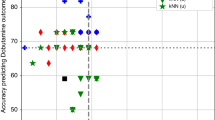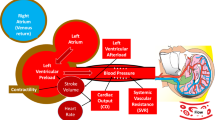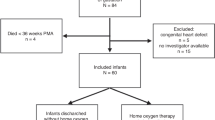Abstract
Introduction:
Dopamine is one of the most frequently used inotropic drugs in neonatal intensive care units (NICUs); however, it does not seem to improve outcomes in premature infants. Given that the ultimate aim of cardiovascular management is to stabilize and maintain organ perfusion, an understanding of dopamine’s effects on organ blood flow will help in judging when to use dopamine and how to titrate the dosage. Such an approach can lead to improved outcomes. This study aimed to evaluate the effects of dopamine on peripheral perfusion in very-low-birth-weight (VLBW) infants within 72 h of birth.
Methods:
This prospective observational study identified and sampled 44 instances of initiation of dopamine treatment or increase in dopamine dose in 29 VLBW infants. Blood pressure, heart rate, and skin and subcutaneous blood flow were measured and compared before and after each instance.
Results:
Blood pressure and skin and subcutaneous blood flow in the lower limbs increased after initiation of dopamine treatment or after dose increase.
Discussion:
Dopamine increases blood pressure as well as skin and subcutaneous blood flow in VLBW infants despite its supposed vasoconstrictive action, indicating that it increases both perfusion pressure and blood flow and is devoid of overwhelming peripheral vasoconstrictive effects.
Similar content being viewed by others
Log in or create a free account to read this content
Gain free access to this article, as well as selected content from this journal and more on nature.com
or
References
Laughon M, Bose C, Allred E, et al. Factors associated with treatment for hypotension in extremely low gestational age newborns during the first postnatal week. Pediatrics 2007;119:273–80.
Dempsey EM, Barrington KJ . Diagnostic criteria and therapeutic interventions for the hypotensive very low birth weight infant. J Perinatol 2006;26:677–81.
Barrington KJ . Hypotension and shock in the preterm infant. Semin Fetal Neonatal Med 2008;13:16–23.
Pellicer A, Valverde E, Elorza MD, et al. Cardiovascular support for low birth weight infants and cerebral hemodynamics: a randomized, blinded, clinical trial. Pediatrics 2005;115:1501–12.
Munro MJ, Walker AM, Barfield CP . Hypotensive extremely low birth weight infants have reduced cerebral blood flow. Pediatrics 2004;114:1591–6.
Seri I . Circulatory support of the sick preterm infant. Semin Neonatol 2001;6:85–95.
Seri I, Abbasi S, Wood DC, Gerdes JS . Regional hemodynamic effects of dopamine in the sick preterm neonate. J Pediatr 1998;133:728–34.
Ishiguro A, Sekine T, Suzuki K, et al. Changes in skin and subcutaneous perfusion in very-low-birth-weight infants during the transitional period. Neonatology 2011;100:162–8.
Seri I . Cardiovascular, renal, and endocrine actions of dopamine in neonates and children. J Pediatr 1995;126:333–44.
Noori S, Friedlich P, Seri I . Developmentally regulated cardiovascular, renal, and neuroen-docrine effects of dopamine. Neoreviews 2003;4:E283–8.
Yanowitz TD, Jordan JA, Gilmour CH, et al. Hemodynamic disturbances in premature infants born after chorioamnionitis: association with cord blood cytokine concentrations. Pediatr Res 2002;51:310–6.
Seri I . Systemic and pulmonary effects of vasopressors and inotropes in the neonate. Biol Neonate 2006;89:340–2.
Hausdorff WP, Caron MG, Lefkowitz RJ . Turning off the signal: desensitization of beta-adrenergic receptor function. FASEB J 1990;4:2881–9.
Watterberg KL, Gerdes JS, Gifford KL, Lin HM . Prophylaxis against early adrenal insufficiency to prevent chronic lung disease in premature infants. Pediatrics 1999;104:1258–63.
Huysman MW, Hokken-Koelega AC, De Ridder MA, Sauer PJ . Adrenal function in sick very preterm infants. Pediatr Res 2000;48:629–33.
Clark SJ, Yoxall CW, Subhedar NV . Right ventricular performance in hypotensive preterm neonates treated with dopamine. Pediatr Cardiol 2002;23:167–70.
Lundstrøm K, Pryds O, Greisen G . The haemodynamic effects of dopamine and volume expansion in sick preterm infants. Early Hum Dev 2000;57:157–63.
Padbury JF, Agata Y, Baylen BG, et al. Dopamine pharmacokinetics in critically ill newborn infants. J Pediatr 1987;110:293–8.
Rozé JC, Tohier C, Maingueneau C, Lefèvre M, Mouzard A . Response to dobutamine and dopamine in the hypotensive very preterm infant. Arch Dis Child 1993;69:1 Spec No:59–63.
Osborn D, Evans N, Kluckow M . Randomized trial of dobutamine versus dopamine in preterm infants with low systemic blood flow. J Pediatr 2002;140:183–91.
Zhang J, Penny DJ, Kim NS, Yu VY, Smolich JJ . Mechanisms of blood pressure increase induced by dopamine in hypotensive preterm neonates. Arch Dis Child Fetal Neonatal Ed 1999;81:F99–104.
Noori S, Friedlich PS, Seri I . Pathophysiology of shock in the fetus and neonate. In: Polin RA, Fox WW, Abman SH, eds. Fetal and Neonatal Physiology, 3rd edn. Philadelphia: Saunders, 2004:772–81.
Ishiguro A, Sekine T, Kakiuchi S, et al. Skin and subcutaneous blood flows of very low birth weight infants during the first 3 postnatal days. J Matern Fetal Neonatal Med 2010;23:522–8.
Lee J, Rajadurai VS, Tan KW . Blood pressure standards for very low birthweight infants during the first day of life. Arch Dis Child Fetal Neonatal Ed 1999;81:F168–70.
Author information
Authors and Affiliations
Corresponding author
Rights and permissions
About this article
Cite this article
Ishiguro, A., Suzuki, K., Sekine, T. et al. Effect of dopamine on peripheral perfusion in very-low-birth-weight infants during the transitional period. Pediatr Res 72, 86–89 (2012). https://doi.org/10.1038/pr.2012.37
Received:
Accepted:
Published:
Issue date:
DOI: https://doi.org/10.1038/pr.2012.37
This article is cited by
-
Influence of sympathetic activity in the control of peripheral microvascular tone in preterm infants
Pediatric Research (2016)
-
Skin blood flow as a predictor of intraventricular hemorrhage in very-low-birth-weight infants
Pediatric Research (2014)



